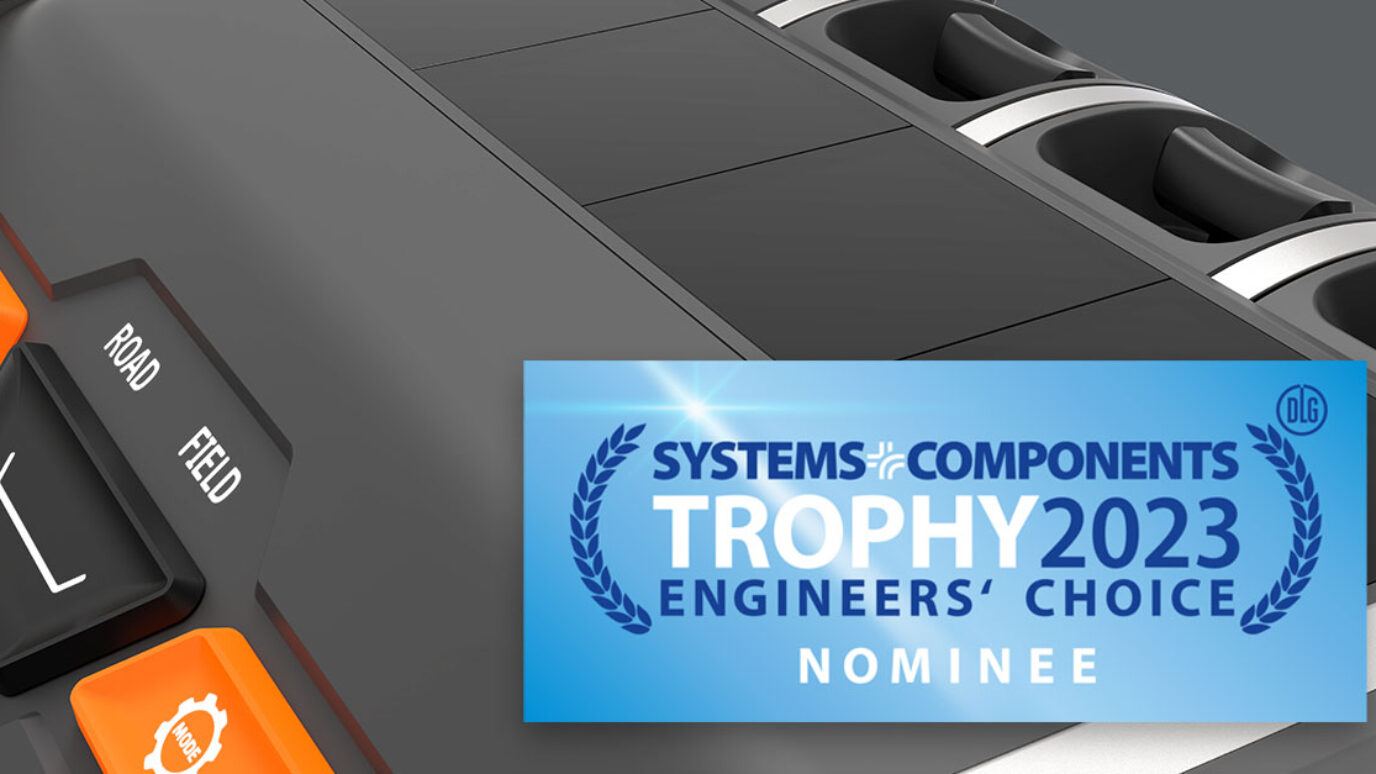

The versatile use of tractors not only in agriculture but also in construction, forestry, and the municipal sector requires alternating implements that need to be coupled to the tractor. Each implement has its own requirements concerning its operation. However, today’s multi-functional armrests in tractors are mostly static and therefore a compromise solution in ergonomics for alternating operating scenarios. In contrast to self-propelled harvesters, the operation of implements with the multi-functional armrest of the tractor is not seen as one entity. This causes disadvantages in cognitive and physical ergonomics. Transferring the static HMI to each individual implement creates unnecessary cognitive load for the driver. The almost static assignment of functions to controls on the HMI causes unnecessary hand movements and thus physical ergonomic discomfort. In particular, less qualified drivers suffer from these ergonomic disadvantages.
This is exactly where the aISA (adaptive interface systems in agricultural tractors) project came in in 2017, which the German company elobau carried out together with the University of Hohenheim and the University of Stuttgart in the period up to 2020. For the first time, an adaptive control armrest was developed able to adapt to the operating requirements of the implement coupled to the tractor. For this purpose, the adaptive control armrest displays function-specific icons of the implement, adapts the direction of the controls to the operated function, e.g. up/down or forward/backward, assigns frequently used functions to the more easily accessible controls or “hides” controls that are not required in the current operating scenario. This improves both cognitive and physical ergonomics. A fully functional prototype was developed and used on test drives in the tractor.
In the ongoing follow-up project aISA 2.0, this idea is now being logically extended to tractors and implements: the fully functional prototype of the adaptive control armrest, which was also on display at Agritechnica 2019, served as the basis for the development of the aISA system. The aISA system goes one level higher and connects the adaptive control armrest, tractor and implement. This innovative solution offers implement manufacturers the opportunity to transfer their own operating philosophy based on the ISOBUS standard to the haptic operating system of the aISA armrest. In this way, the adaptive control armrest adapts to any implement as soon as it is coupled and provides the user with an ergonomic interface that matches the implement. A solution has also been developed for non-ISOBUS implements. For a holistic view and specification of the aISA system, numerous commercially available implements were examined with a broader perspective to ensure that the aISA system meets the different requirements for the operation of the implements.
The project consortium in the follow-up project aISA 2.0 consists of five members: The coordination is carried out by the research and teaching area of Technical Design at the Institute for Mechanical and Technical Design (IKTD) at the University of Stuttgart. The IKTD has already completed the predecessor project (aISA) together with the Institute of Agricultural Engineering at the University of Hohenheim (ATH) and the company elobau GmbH & Co. KG from Leutkirch in Germany. In the current aISA 2.0 project, they are also supported by the Competence Center ISOBUS e.V. association from Osnabrück and the tractor manufacturer Same Deutz-Fahr. The project sponsor is the Federal Office for Agriculture and Food (BLE) and the project is funded by the Federal Government’s special purpose fund at Landwirtschaftliche Rentenbank and the Innovation Fund.
At this year’s Agritechnica (Nov. 12-18,2023), the adaptive armrest will be presented to an international audience for the first time in a completely new design and with many new adaptive features as part of the aISA system. elobau is pleased that the project has also been nominated for the SYSTEMS & COMPONENTS Trophy – Engineer’s Choice award, which will be conferred by the DLG (German Agricultural Society) at Agritechnica.
The new development can be seen at the elobau booth (Hall 17, booth number 17F28).

Comments
write a comment